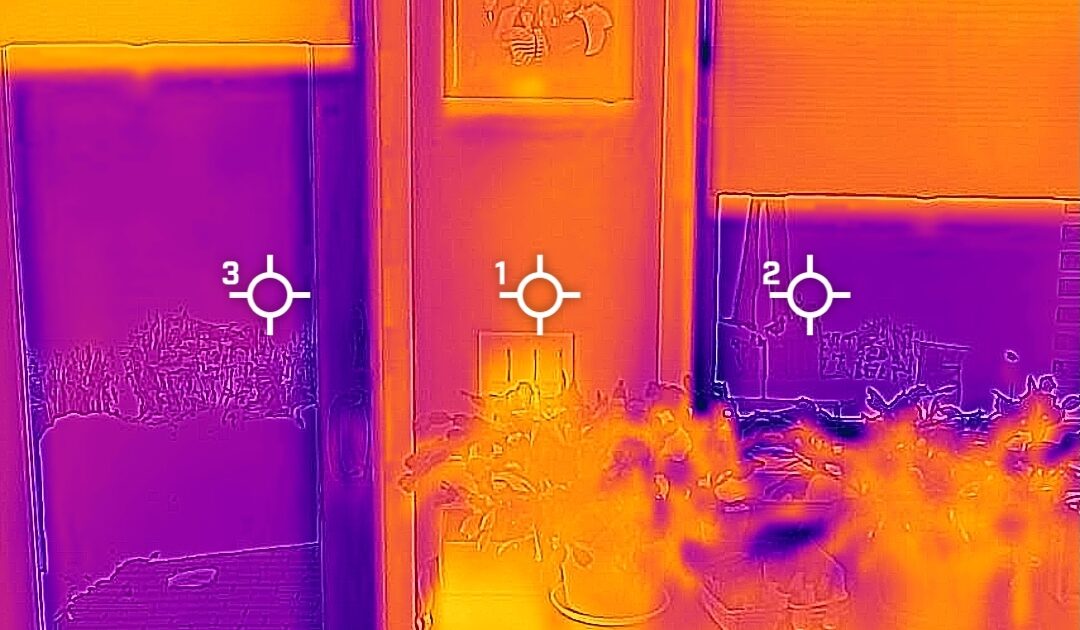When it comes to insulating exterior walls for any building the old adage is still very true: You’re only as strong as your weakest link, and for the exterior walls, windows are the weakest link where a high majority of thermal bridging (energy loss) occurs.
For a residential home, you can basically divide the exterior wall insulation into 3 sections:
- The chamber (the space between the studs)
- The framing (studs, plates, headers)
- The windows
We can talk all day long about how we can improve the thermal bridging of the wall, but I don’t know too many exterior walls in a home that doesn’t have a window in that exterior wall. In my old home that would have been two walls total that had no windows.
Understanding the Window Insulation U/R-Value
Most homeowners are shocked to learn that the average U-0.32 double-pane, low-e window, the most common type installed in homes today, has a window insulation value of only R-3. That’s remarkably low, especially when your wall chamber could be rated R-15 or higher. This makes windows the clear weak point in exterior insulation.
To really improve the exterior wall insulation of a home you need to upgrade to a U-0.16 or R-6 triple pane window. That almost doubles the value of the weakest insulation point of the exterior wall section. Windows can easily take up 10-20% of the total exterior wall area.
Combining Smart Framing and Energy Efficient Windows
This is where the EcoSmart™ Stud (ESS) becomes an essential part of the equation. Since the ESS is a much less expensive way to increase the insulation value of the framing compared to continuous insulation (CI), we can upgrade the window insulation also! This how we get a 50-70% reduction in HVAC energy needs by upgrading the chamber, framing, and window insulation simultaneously. For less money than CI insulation alone!
Let’s put some numbers to that.
Window and Wall U/R-Value Comparisons
Let’s put real numbers to these performance improvements. The following window insulation R-value and wall system comparisons are based on a standard 16 ft framed wall section with 10% window coverage.
- Base Build: 2×6 framing, R-20 fiberglass batts, double pane window = R-8.65 effective insulation
- Upgrade #1: R20+7.5CI wall section with double pane window = R-11.2 effective insulation
- Upgrade #2: 2×6 ESS wall section triple pane window = R-14.25 effective insulation.
- Upgrade #3: 2×8 ESS wall section triple pane window = R-19.2 effective insulation
Best Energy Efficient Windows and Wall System Cost Comparison
Now let’s translate this into an actual home build. Part of this information is based on actual bids on a 2240 sq ft 2018 new home build.
- 2×6 framing, R-60 attic, R-20 fiberglass batts, Double pane windows. Base cost-$
- R20+7.5CI wall build with double pane windows. Adding up all extra labor and materials cost. Upgrade cost $11,500
- 2×6 ESS wall build: $1280 extra for 2×6 ESS, insulation upgrade $2500, Triple pane windows $2200. Upgrade cost $5980.
- 2×8 ESS wall build: $2240 extra for 2×8 ESS, insulation upgrade $3500, Triple pane windows $2200. Upgrade cost $7940
How Improving Window Insulation Saves Energy and Money
What do these numbers tell us?
- The 2×6 and 2×8 ESS wall systems with triple pane windows outperform CI walls with double pane windows.
- The cost is lower.
- The wall performs better.
- Your energy bills drop.
Pairing ESS framing with the energy efficient triple pane windows ensures your weakest insulation link becomes a strength. Add in Flash and Fill insulation, and you have a fully optimized wall system.
